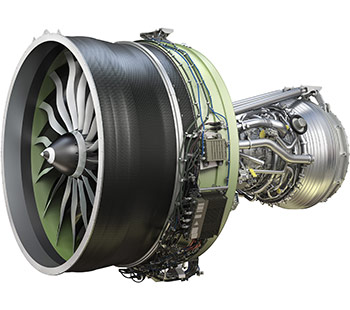Leeham News and Analysis
There's more to real news than a news release.
Bjorn’s Corner: Aircraft engine maintenance, Part 3
March 17, 2017, ©. Leeham Co: In the last Corner, we showed graphs of the yearly flight hours for engines on single-aisle aircraft. Now we will deduce the market for engine overhauls from these graphs.
These will show which engines generate a maintenance volume that is interesting for engine overhaul companies and which engines are niche.
Based on the market size, we will then go through how an engine is maintained when new, mature and at end-of-life.
Boeing 737 MAX 10 analyzed
By Bjorn Fehrm
Note: Boeing’s “soft launch” of the 737-10 MAX at the ISTAT conference in San Diego a week ago met with some sharp criticism by lessors and some others. Within hours, Boeing scheduled a conference call for reporters the next day to defend and promote the airplane. LNC closely tracked the development of the MAX 10 and its competivitive position vis-a-vis the Airbus A321neo. Here is our first detailed, public analysis of the MAX 10.–Editor.
Subscription Required
Introduction
March 12, 2017, © Leeham Co.: Boeing has taken the wraps of the 737 MAX 10. Its overall configuration has long been known to LNC, but we now have more data and performance claims that we can analyze.
Boeing claims the MAX 10 flies farther, cheaper and with just about the same numbers of passengers as the class-leading Airbus A321neo. We now have enough data to analyze if this is true. We put the data in our performance model and here is the result.
We now have enough data to analyze if this is true. We put the data in our performance model and here is the result.
Summary:
- Boeing’s claims on a basic level seem OK. The seating is close to the A321neo.
- On a higher level it starts to stutter. Our model can’t agree on the 5% better economics.
Read more
Bjorn’s Corner: Aircraft engines maintenance, Part 2
March 10, 2017, ©. Leeham Co: Last week we started the series how airline turbofans are maintained. We described the typical work scopes and what the intervals were for different single-aisle engines.
Before we can describe the engine maintenance market we must get a feel for the market size for different engine types.
We will start with understanding the single-aisle engine maintenance market. Read more
Bjorn’s Corner: Aircraft engine maintenance, Part 1
March 3, 2017, ©. Leeham Co: We will now go through how airline turbofans are maintained. First, we will describe the typical work which is performed, then look into the markets for engine maintenance.
In the markets for engine maintenance, we will look at who the players are, how they are related to the engine OEMs and why the market dynamics are very different between engines for single-aisle aircraft and wide-bodies.
Bjorn’s Corner: Aircraft engines in operation, Part 6
February 24, 2017, ©. Leeham Co: After having analyzed how the engine gets stressed during different phases of flight, we now look into how engines are used. The de-rating of engines for takeoff is important, as not 100% thrust is needed for all takeoffs. If the aircraft is lightly loaded or is taking off from a long runway, with low temperatures or altitude, the engine can be thrust de-rated so that it experiences less stress.
Once in the air, the engine is run below maximum settings by use of cost-index. These actions will result in less fuel usage and also longer engine operation between overhauls. We will now finish the operations part of our engine clinic with how airlines keep the engines away from the workshops by swapping the engines between fleet aircraft.
A visit to the engine workshop costs in the millions of dollars, so the longer the engine can operate before a shop visit, the better. Read more
Ryanair: cheapest and most profitable airline in Europe
By Bjorn Fehrm
February 22, 2017, ©. Leeham Co: Ryanair is Europe’s airline with the lowest fares. And it’s the most profitable, despite growing faster than even the Middle East carriers (growth needs money).
It’s time to dive deep in this locomotive. I even flew their business class before writing the report, to understand what is going on. Read more
Bjorn’s Corner: Aircraft engines in operation, Part 5
February 17, 2017, ©. Leeham Co: In our journey of an airline engine’s life, we will now look at the maintenance which is necessary to keep it fit for flight.
An engine is only in top condition once in its life, at delivery. As soon as it’s operated on the aircraft, in-service wear of its different parts will reduce its performance.
The engine manufacturer’s prescribed maintenance is designed to keep the engine in good health during its life, despite all its hardship. Read more






 COMAC, a spin off from AVIC and yet another government-controlled entity, is already casting eyes on a 250-seat, twin-aisle design, the C929—ostensibly in a joint venture with Russia’s United Aircraft Corp.
COMAC, a spin off from AVIC and yet another government-controlled entity, is already casting eyes on a 250-seat, twin-aisle design, the C929—ostensibly in a joint venture with Russia’s United Aircraft Corp.